"Grandpa has problems when he retires." Oldfilm.org
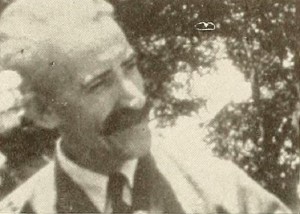
"Flowering Byways, presented with well chosen musical accompaniment, is a story of the creation and growth of a home garden, cleverly interwoven with the thread of human interest. In it, Ernest Kremer has made a thoroughly enjoyable and interesting record of his father in law's gardening ability. "Pop's garden" has its beginnings in the chilly days of early spring, when the bare ground gives little promise of the profusion of bloom that is to spring up under Pop's skillful hands. We follow with keen interest the growth of the garden through subsequent months. Mr. Kremer's skill in presentation being demonstrated by the constant variety of material and by the interpolation of well chosen touches of human interest. Finally, the apotheosis of Pop's garden creation is realized when he takes first prize at the local garden club show. The flower closeups here are always excellent, but they are not made an end in themselves." Movie Makers, Dec. 1941, 565.
"Children playing with a box of toys in the garden at Westworth, Cockermouth. Adults emerge from the house to walk and run around in the garden." (NWFA Online Database)
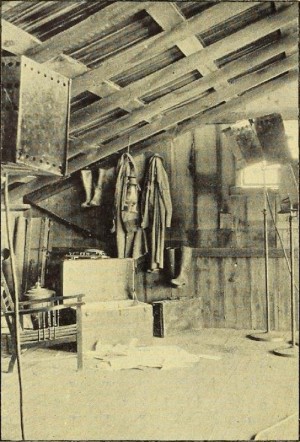
"Galleon Gold, 1600 ft., 16 mm., produced by the San Jose Players under the leadership of John C. Waterhouse, strikes a more sober note. This entertaining drama of the youth of a venerable Spanish family, who discover the treasure trove of the Conquistadores in time to save the family hacienda from the encroachment of the lime quarries, contains much good photography, a smooth continuity, experienced acting and first rate direction." Movie Makers, Sept. 1930, 569.
"Galleon Gold, 1600 ft., 16mm., produced by the San Jose Players, deserves special mention for its smooth flowing continuity alone. Although the difficulty of securing a lucid continuity is greatly increased in a longer dramatic picture, the producers of this film have achieved perfect clarity. This film was made during a summer vacation at a mountain ranch and it seemed at first that the lack of electric current for lighting would be an insuperable obstacle since the script called for many interior scenes. The problem was finally solved by a portable motor generator driven by a gas engine which, with proper lighting equipment, made ample illumination possible." Movie Makers, Dec. 1930, 788.
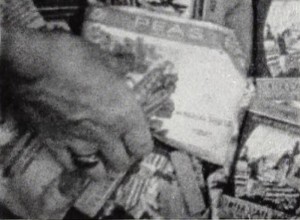
"Albert D. Furnans has taken a group of charming people in a natural pursuit, truck gardening, and has developed a genuinely amusing "running gag"; the result is a delightful family film. Through an excellent sense of timing, he has sustained the "gag" with proper finesse until its final disclosure. The refreshing use of angles and the meaningful employment of lighting, together with good editing, bring balance and clarity. The entire picture shows the result of good planning and directing, and the filming keeps well abreast of these." Movie Makers, Dec. 1945, 496.
"Film is about a siamese cat statue that Aunt Emily gives to her nephew George who gives it to his brother. Eventually someone gives it to Aunt Emily who gives them a cheque for $1,000" Archives of Ontario.
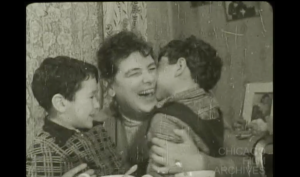
"A group of children learn in school that tomorrow will be “Woman’s Day”, the equivalent of our “Mother’s Day”, then the humorous story unfolds in a delightful and charming manner of how two small boys decide to celebrate this occasion. An amateur film made by a Russian filmmaker and distributed by the Society of Amateur Cinematographers (SAC). All title cards are in Russian." Chicago Film Archives
"Record of a Woodley family trip to the Gaspé." Library and Archives Canada.
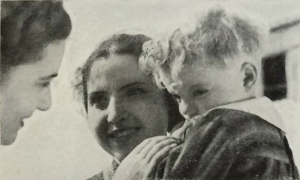
"a sogg. lungh. norm." Feature fiction film
"La grande casa, realizzato da Guido Pallaro, Cesco Cocco, Fernando de Marzi, soggetto di Giulio Fracarro, operatore Antonio Schiavinotto, interpreti Livia Lauri, Otello Toso, Lia Zanolla, Ario Chiarin, Luisa Sironi, aiuto Giorgio Pomerri. II film prodotto dalla Sezione Cinematografica del GUF di Padova che nelle prove precedenti ha dimostrato di possedere un buon numero di elementi volonterosi e di sicure possibilità, risente nel suo complesso della bontà della organizzazione; e questo un elemento da tener presente, perché mostra che ove alla buona organizzazione si venga ad aggiungere una piu persuasiva forza artistica, il gruppo Padovano potrà raggiungere risultati cospicui. Il difetto della Grande Casa sta appunto nella mancanza di forza interiore. Il tema prescelto, la costruzione della Casa dell'assistenza, non è stato svolto in uno scenario organico e provvisto di elementi atti a permettere una realizzazione più serrata e convincente; invece la narrazione è un po' preoccupata, lenta e dispersiva. Comunque il film non manca di momenti felici, di qualche buona descrizione ambientale, di sobrietà interpretativa; cosi pure l'assenza di retorica e un elemento da non trascurarsi e che torna a vantaggio della produzione."
"The Great House (La grande casa), by Guido Pallaro, Cesco Cocco, Fernando de Marzi, subject by Giulio Fracarro, cameraman Antonio Schiavinotto, actors Livia Lauri, Otello Toso, Lia Zanolla, Ario Chiarin, Luisa Sironi, assistant Giorgio Pomerri. The film produced by the Padua GUF Cinematographic Section, which in previous tests has demonstrated that it possesses a good number of willing elements and certain possibilities, suffers in its entirety from the virtue of the organization; and this is an element to keep in mind, because it shows that where good organization is added to a more persuasive artistic force, the Paduan group can achieve significant results. The defect of The Great House is precisely in its lack of inner strength. The theme chosen, the construction of the House of assistance, was not carried out in an organic scenario nor was it provisioned with elements to allow a more tight and convincing direction; instead the narrative is a little worried, slow and scattered. However, the film does not lack apt moments, of some good environmental description, of interpretative sobriety; so also the absence of rhetoric is an element not to be neglected and that returns to the advantage of the production."
—Il ventuno 28 (Review of the G.U.F. of Venice), May 1935
Total Pages: 19